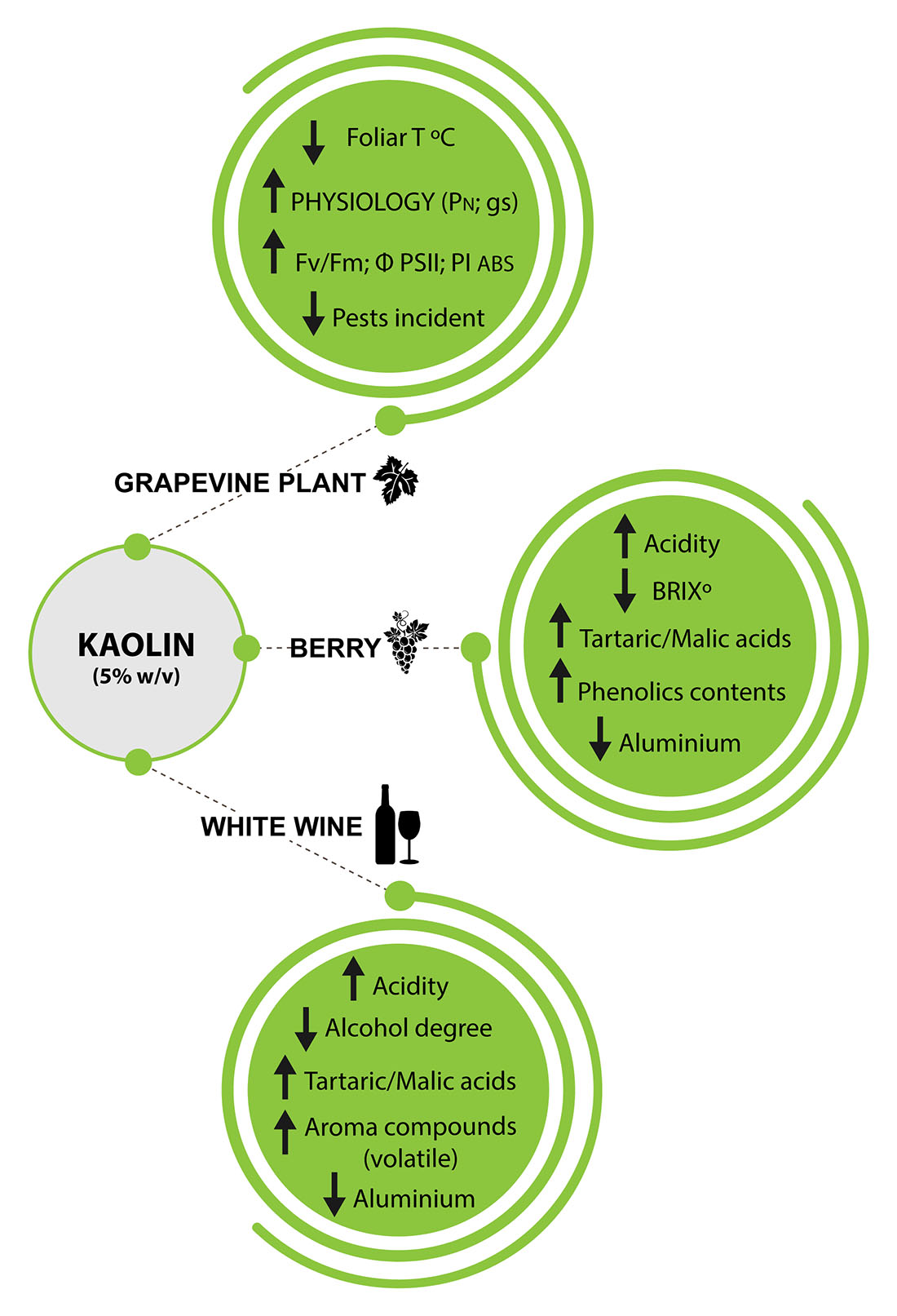Kaolin protective effect was assessed in a white grapevine cultivar ‘Cerceal’ in ‘Alentejo’ Region (southeast Portugal) where plants face extreme conditions during summer season. We addressed the hypothesis that kaolin effects lead to several changes in leaves, fruits and wine characteristics on the primary and secondary metabolism. Results showed that kaolin reduces leaf temperature which provoke an improvement in physiological parameters such as net photosynthesis and water use efficiency. This protection interferes with berries colour, leaving them more yellowish, and an increase in phenolic compounds were observed in all fruit tissues (skin, seed and pulp). Also, both berry and wine characteristics were strongly affected, with an increase of tartaric and malic acid and consequently high total acidity, while the sugar concentration decreased 8.9% in berries provoking a low wine alcohol level. Results also showed that kaolin induces high potassium, magnesium and iron, and low copper and aluminum concentrations. Moreover, the control wine showed higher content of esters related with hostile notes whereas wine from kaolin treated vines presented higher content of esters associated with fruity notes. Overall, the results strengthen the promising nature of kaolin application as summer stress mitigation strategy protecting grapevine plants and improving fruits quality and more balanced wines.

